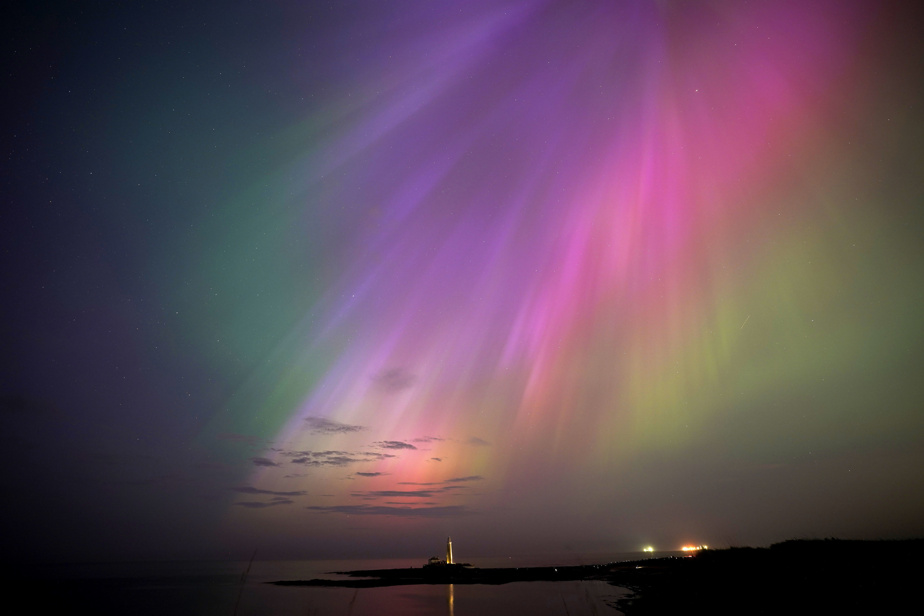Gas and altitude
The color of auroras depends on several factors, including the composition of the atmosphere, but also the altitude at which they form.
When a solar flare occurs, it sometimes throws large quantities of electrically charged particles (protons and electrons) toward Earth. When they reach our planet, these particles collide with molecules and atoms in the upper atmosphere, causing them to ionize and produce light.

PHOTO ETHAN CAIRNS, CANADIAN PRESS ARCHIVES
Northern Lights in the sky over Vancouver, British Columbia, on May 11
“It’s the same phenomenon as in a neon tube, which is made up of a gas where an electric field is circulated,” explains Loïc Quesnel, science communicator at the Rio Tinto Alcan Planetarium. “The gas accumulates energy, which it then releases by emitting light. »
This light will be of a different color depending on the type of gas struck by the particles coming from the Sun. For example, if the collision occurs between 100 and 300 km altitude with oxygen molecules, a green aurora, the most commonly observed, is produced. Around 300 or 400 km on the other hand (which corresponds to the altitude of the International Space Station), oxygen molecules become rare; the particles instead encounter oxygen atoms, and we then observe red auroras.
Around 100 km altitude, if the collision is with nitrogen molecules, the color will be pink or dark red. Finally, although they are difficult to see, blue and purple auroras can also occur at this altitude with hydrogen or helium molecules.
A story of magnetic field
If auroras usually occur in the Far North or around Antarctica, it is because of the Earth’s magnetic field, which deflects charged particles coming from the Sun to send them towards the poles. However, when the solar wind is particularly powerful, as was the case on May 10 and 11, auroras can sometimes be visible at unusual latitudes, for example in southern Quebec or in France.

PHOTO HINA ALAM, CANADIAN PRESS ARCHIVES
Northern Lights in Fredericton, New Brunswick on May 11
“Their shape depends on the way they interact with the magnetic field lines,” explains Loïc Quesnel. The auroras will thus have the appearance of drapes near the magnetic poles, but they will be more diffuse if we are located far from them, because we will then only be able to observe the upper part.
The eye less efficient than the cell phone
To the naked eye, however, the auroras have less vivid colors than those we can see in photos. The nerve cells in the eye responsible for distinguishing different colors, called cones, must receive a lot of light to function. To maximize your chances of seeing the colors of the auroras during a solar storm, it is therefore recommended to move away from cities in order to limit light pollution.
We must also keep in mind that “each person has a relatively different experience of the Northern Lights,” emphasizes Loïc Quesnel. We’ve all seen photos of aurora, so it’s possible that sometimes our brain makes us see color where our eye isn’t even capable of seeing it. »
If you missed this spectacle, rest assured: the Sun has just entered a period of maximum intensity, a periodic phenomenon that returns approximately every 11 years. Although it is difficult to predict, it is likely that new solar storms (and therefore other auroras) will return to light up the sky in the months to come.
